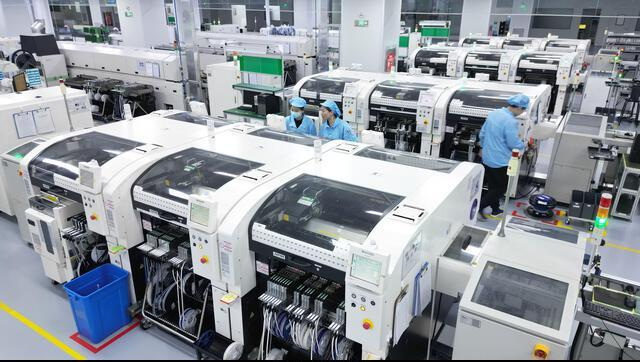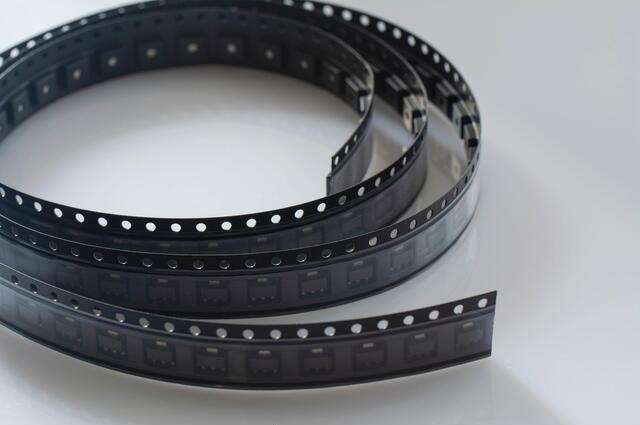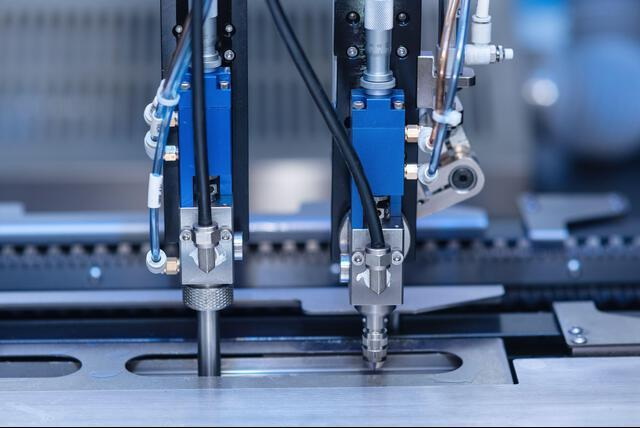Content Menu
● Introduction to SMT Stencils
>> Define SMT Stencil
● Types of SMT Stencils
>> 1. Framed SMT Stencils
>> 2. Frameless SMT Stencils
>> 3. Prototype SMT Stencils
>> 4. Electroformed SMT Stencils
>> 5. Electropolished SMT Stencils
>> 6. Laser Stencils
>> 7. Ladder Stencils
>> 8. Nano Stencils
>> 9. Etched Stencils
● Importance of SMT Stencils in PCB Assembly
● Choosing the Right SMT Stencil
● Advantages of SMT Stencils
>> Precision Deposition
>> Enhanced Efficiency
>> Consistency and Quality Control
>> Cost Savings
>> Flexibility and Adaptability
>> Environmental Considerations
>> Support for Advanced Technologies
● Future Trends in SMT Stencil Technology
>> Nano-coatings and Surface Treatments
>> Additive Manufacturing and Customization
>> Integrated Inspection and Quality Assurance
● Market Trends and Growth
● Stencil Maintenance and Cleaning
● Design Principles for Stencil Apertures
>> Aperture Size and Shape
>> Stencil Thickness
● Conclusion
● FAQs
>> 1. What is the primary function of an SMT stencil?
>> 2. What are the main differences between framed and frameless SMT stencils?
>> 3. How does the manufacturing process affect the choice of SMT stencil?
>> 4. What role do SMT stencils play in automated assembly lines?
>> 5. How does the thickness of an SMT stencil affect solder paste deposition?
● Citations:
Introduction to SMT Stencils
SMT (Surface Mount Technology) stencils are crucial tools in the electronics manufacturing industry, particularly in the assembly of printed circuit boards (PCBs). These stencils are thin metal sheets, typically made of stainless steel or nickel alloys, with precise apertures that match the solder pad locations on a PCB. The primary function of an SMT stencil is to ensure accurate and consistent application of solder paste onto the PCB pads, which is essential for creating reliable solder joints between components and the PCB.

Define SMT Stencil
An SMT stencil, also known as a solder paste stencil, is a custom-made tool used in the printed circuit board assembly (PCBA) process. It is designed to facilitate the precise deposition of solder paste onto the surface mount pads of a PCB. The stencil contains apertures that correspond to the pad locations, allowing solder paste to be applied uniformly across the board. This process is critical for preventing defects such as insufficient solder, bridging, or tombstoning during the reflow soldering process.
Types of SMT Stencils
SMT stencils can be categorized based on their design, manufacturing process, and application. Here are some of the most common types of SMT stencils:
1. Framed SMT Stencils
- Description: Framed SMT stencils are designed for high-volume screen printing. They consist of a laser-cut stencil sheet permanently mounted in a metal frame with a mesh border. This setup ensures that the stencil foil is tightly stretched, providing high positional and dimensional accuracy during the solder paste application process.
- Advantages: Framed stencils are ideal for high-volume production due to their stability and reusability. They facilitate faster alignment between the PCB and stencil, making them suitable for automated assembly lines.
- Disadvantages: The cost of framed stencils is higher due to the additional frame support, and they require more storage space.
2. Frameless SMT Stencils
- Description: Frameless stencils, also known as foils, are low-cost laser-cut stencils not glued to a frame. They are suitable for low-volume stencil printing and prototyping.
- Advantages: Frameless stencils are less expensive and offer cost-effective storage. They provide superior quality and performance for short production runs.
- Disadvantages: They lack the stability and reusability of framed stencils, making them less suitable for high-volume production.
3. Prototype SMT Stencils
- Description: Prototype stencils are used for testing and validating PCB designs before moving to mass production. They are often frameless and designed for low-volume applications.
- Advantages: They allow for quick and cost-effective testing of PCB designs.
- Disadvantages: Not suitable for high-volume production due to their limited durability.
4. Electroformed SMT Stencils
- Description: Electroformed stencils are manufactured through an electroforming process, where metal is deposited onto a mold using electrolysis. This process creates a stencil with excellent mechanical properties.
- Advantages: Electroformed stencils have high strength and stiffness, making them suitable for mass production. They can withstand various pressures and impacts, ensuring long-term production stability.
- Disadvantages: The manufacturing process is complex and may be more expensive than other methods.
5. Electropolished SMT Stencils
- Description: Electropolished stencils undergo an electropolishing treatment to achieve a smooth surface finish. This process reduces solder paste residue and clogging, ensuring uniform solder paste distribution.
- Advantages: Electropolished stencils improve printing efficiency by minimizing solder paste clogging and residue.
- Disadvantages: The electropolishing process adds to the overall cost.
6. Laser Stencils
- Description: Laser stencils are manufactured using high-power lasers to cut precise apertures in the steel sheet. This method ensures high accuracy and smooth edges.
- Advantages: Laser stencils are suitable for high-density and high-demand PCB assembly due to their precision and smooth edges.
- Disadvantages: Higher manufacturing costs make them less economical for high-volume production.
7. Ladder Stencils
- Description: Ladder stencils are designed to handle components of different heights on a PCB. They ensure even solder paste printing across various component types.
- Advantages: Suitable for PCBs with mixed component types, such as BGA and QFP.
- Disadvantages: More complex design may increase costs.
8. Nano Stencils
- Description: Nano stencils utilize nanotechnology to improve the surface roughness of the stencil, reducing clogging and wear during solder paste application.
- Advantages: Improve printing efficiency and reduce tin beads caused by surface roughness.
- Disadvantages: The nanotechnology treatment may add to the cost.
9. Etched Stencils
- Description: Etched stencils are manufactured using chemical etching, which selectively removes metal to form the required apertures.
- Advantages: The manufacturing process is relatively simple and cost-effective.
- Disadvantages: Less precise than laser-cut stencils and may require more maintenance.
Importance of SMT Stencils in PCB Assembly
SMT stencils play a vital role in ensuring the quality and efficiency of PCB assembly. Here are some key reasons why SMT stencils are indispensable:
- Precise Solder Paste Deposition: SMT stencils ensure that the right amount of solder paste is applied to each pad, reducing defects such as bridging or tombstoning.
- Consistent Solder Paste Volume: The thickness of the stencil determines the solder paste volume, allowing for uniform deposits across the PCB.
- Increased Efficiency: SMT stencils enable simultaneous solder paste application to all pads, significantly reducing the time and effort required.
- Compatibility with Automated Assembly: Essential for automated assembly lines, SMT stencils facilitate the use of solder paste printers, increasing production speed and consistency.

Choosing the Right SMT Stencil
When selecting an SMT stencil, several factors should be considered:
- Application Requirements: Determine if the stencil is for high-volume production, prototyping, or mixed-component PCBs.
- Precision and Accuracy: Choose a stencil type that meets the precision requirements of your PCB design.
- Cost and Budget: Balance the cost of the stencil with the production volume and quality needs.
- Material and Manufacturing Process: Consider the durability and surface finish required for your application.
Advantages of SMT Stencils
Integrating SMT stencils in PCB assembly offers several benefits:
Precision Deposition
SMT stencils ensure precise and uniform solder paste deposition on PCB pads, minimizing solder bridging and ensuring consistent solder joint quality. This precision is essential for reliable electrical connections, enhancing product performance and longevity[2].
Enhanced Efficiency
Stencils streamline the PCB assembly process by enabling simultaneous solder paste application across multiple PCBs. This reduces assembly time, accelerates production throughput, and helps manufacturers meet tight deadlines and delivery schedules[2].
Consistency and Quality Control
Consistent solder paste deposition improves product quality and reliability. Uniform solder joints enhance electrical conductivity and mechanical stability, meeting industry standards for performance and reliability. This consistency reduces defects, lowering rework costs[2].
Cost Savings
Accurate solder paste application minimizes material wastage and reduces the need for rework or repairs. Higher first-pass yield rates lower overall production costs, enhancing profitability for manufacturers[2].
Flexibility and Adaptability
Modern SMT stencil technologies adapt to diverse PCB designs and component configurations. Customizable stencil designs accommodate fine-pitch components, complex layouts, and varying board thicknesses, supporting the integration of new technologies without compromising quality[2].
Environmental Considerations
SMT stencils contribute to sustainability by optimizing resource use and reducing material waste. Improved efficiency and minimized defects reduce energy consumption and carbon emissions. Advanced materials and coatings promote longevity and recallability, reducing environmental impact[2].
Support for Advanced Technologies
SMT stencils support technological advancements like miniaturization and increased functionality. They enable precise solder paste deposition for small, delicate components and high-density interconnections, crucial for developing compact, sophisticated electronic products[2].
Future Trends in SMT Stencil Technology
The evolution of SMT stencil technology continues to drive innovation:
Nano-coatings and Surface Treatments
Advanced nano-coatings improve solder paste release and reduce adhesion, enhancing print quality and fine-pitch component printing. They also require less frequent cleaning, prolonging stencil life[2].
Additive Manufacturing and Customization
3D printing enables custom-designed SMT stencils with intricate geometries and tailored aperture designs. This flexibility accommodates unique PCB layouts and component configurations[4].
Integrated Inspection and Quality Assurance
Emerging technologies integrate automated inspection systems into the stencil printing process, enabling real-time monitoring of solder paste deposition quality. Automated systems detect defects like insufficient solder paste volume or misalignment, ensuring adherence to manufacturing specifications[2].
Market Trends and Growth
The global SMT stencil market is experiencing robust growth, driven by the increasing demand for sophisticated electronic devices across diverse sectors. The surge in miniaturization and automation within the electronics manufacturing industry is a key factor fueling this expansion. Frameless SMT stencils are gaining popularity due to their superior precision and adaptability to complex PCB designs, while framed stencils continue to hold a significant market share due to their cost-effectiveness and ease of handling[4].
Stencil Maintenance and Cleaning
Regular cleaning of the SMT stencil is necessary to maintain print quality and prevent defects caused by clogged apertures or solder paste buildup. The cleaning process typically involves removing excess solder paste from the stencil surface using a solvent or wipe, cleaning the apertures using a stencil cleaner or ultrasonic cleaning system, and drying the stencil thoroughly before the next print cycle[5].
Design Principles for Stencil Apertures
Proper stencil design is crucial for achieving high-quality solder paste prints and minimizing defects. Key factors to consider include:
Aperture Size and Shape
The size and shape of stencil apertures should match the PCB pads while accounting for the solder paste's properties and desired solder joint profile. Common aperture shapes include rectangles, circles, and home plates. Designers must adhere to minimum aperture width and pitch guidelines to ensure proper paste release and prevent bridging[6].
Stencil Thickness
Selecting the appropriate stencil thickness is critical for achieving optimal solder paste volume and print quality. Thinner stencils are ideal for fine-pitch components but may struggle with sufficient paste volume, while thicker stencils can provide robust deposits but may hinder paste release. Manufacturers must balance thickness based on PCB design, component specifications, and solder paste characteristics[6].
Conclusion
SMT stencils are essential tools in modern PCB assembly, enabling manufacturers to achieve superior precision, efficiency, and quality control. Understanding the types, materials, manufacturing processes, advantages, challenges, and future trends empowers professionals to optimize production processes, reduce costs, and deliver reliable electronic products.

FAQs
1. What is the primary function of an SMT stencil?
An SMT stencil is used to apply solder paste precisely onto the surface mount pads of a PCB, ensuring accurate and controlled deposition before component placement.
2. What are the main differences between framed and frameless SMT stencils?
Framed stencils are mounted in a frame, providing stability and reusability, making them suitable for high-volume production. Frameless stencils are less expensive and ideal for low-volume applications or prototyping.
3. How does the manufacturing process affect the choice of SMT stencil?
The manufacturing process (e.g., laser cutting, electroforming, chemical etching) affects the precision, durability, and cost of the stencil. Laser cutting offers high precision, while electroforming provides strength and stiffness.
4. What role do SMT stencils play in automated assembly lines?
SMT stencils are essential for automated assembly lines as they enable the use of solder paste printers, increasing production speed and consistency by allowing simultaneous solder paste application to multiple PCBs.
5. How does the thickness of an SMT stencil affect solder paste deposition?
The thickness of an SMT stencil determines the volume of solder paste deposited on each pad. Using a stencil with the appropriate thickness ensures uniform solder paste deposits, leading to better soldering quality and fewer defects.
Citations:
[1] https://www.twistedtraces.com/blog/understanding-smt-stencils-the-backbone-of-electronics-manufacturing
[2] https://jlcpcb.com/blog/guide-to-smt-stencils-in-pcb-assembly
[3] https://iconnect007.com/article/118546/smt-stencils-101-what-are-industrystandard-stencil-designs/118549/smt
[4] https://www.marketreportanalytics.com/reports/smt-stencils-27937
[5] https://rigidflexpcb.org/comprehensive-guide-to-smt-stencils/
[6] https://pcbpit.com/smt-stencil-a-comprehensive-guide/
[7] https://nanoslic.com/smt-stencil-coatings/
[8] https://www.7pcb.com/blog/design-principles-stencil-aperatures
[9] https://blueringstencils.com/top-5-smt-industry-trends-for-2019/
[10] https://silmantech.com/how-to-prolong-the-lifespan-of-smt-stencils/
[11] https://www.oem-pcb.com/news/the-role-of-stencils-in-smt-precision-effici-80830062.html
[12] https://blueringstencils.com
[13] https://www.ipc.org/system/files/technical_resource/E38&S12-02%20-%20Chrys%20Shea.pdf
[14] https://www.datainsightsmarket.com/reports/stainless-steel-smt-stencil-1660616
[15] https://www.linkedin.com/pulse/best-worst-practices-stencil-care-maintenance-vslpc
[16] https://www.7pcb.com/blog/stencil-technology-smt-production
[17] https://www.stentech.com/products/advanced-nano
[18] https://www.surfacemountprocess.com/a-guide-to-effective-stencil-design.html
[19] https://southeast.newschannelnebraska.com/story/52593679/SMT-Stencil-Printer-Market-Powering-the-Next-Wave-of-Innovation/
[20] https://www.youtube.com/watch?v=rCivj205htA




















